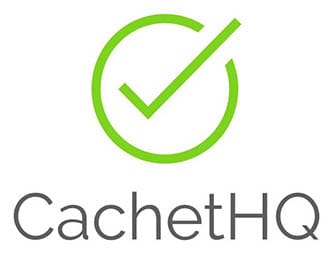
In this tutorial, we will show you how to install CachetHQ on Ubuntu 18.04 LTS. For those of you who didn’t know, Cachet is a beautiful and powerful open-source status page system written in PHP that allows you to better communicate downtime and system outages to your customers, teams, and shareholders.
This article assumes you have at least basic knowledge of Linux, know how to use the shell, and most importantly, you host your site on your own VPS. The installation is quite simple and assumes you are running in the root account, if not you may need to add ‘sudo‘ to the commands to get root privileges. I will show you the step-by-step installation of CachetHQ on a Ubuntu 18.04 (Bionic Beaver) server.
Prerequisites
- A server running one of the following operating systems: Ubuntu 18.04 (Bionic Beaver).
- It’s recommended that you use a fresh OS install to prevent any potential issues.
- SSH access to the server (or just open Terminal if you’re on a desktop).
- An active internet connection.
- A
non-root sudo useror access to theroot user. We recommend acting as anon-root sudo user, however, as you can harm your system if you’re not careful when acting as the root.
Install CachetHQ on Ubuntu 18.04 LTS Bionic Beaver
Step 1. First, make sure that all your system packages are up-to-date by running the following apt commands in the terminal.
sudo apt update sudo apt upgrade
Step 2. Install LAMP (Linux, Apache, MariaDB, and PHP) server.
An Ubuntu 18.04 LAMP server is required. If you do not have LAMP installed, you can follow our guide here. Also, install all required PHP modules:
apt install php7.2 libapache2-mod-php7.2 php7.2-common php7.2-mbstring php7.2-xmlrpc php7.2-soap php7.2-gd php7.2-xml php7.2-intl php7.2-mysql php7.2-cli php7.2-zip php7.2-curl
Step 3. Configuring MariaDB for CachetHQ.
By default, MariaDB is not hardened. You can secure MariaDB using the mysql_secure_installation script. you should read and below each step carefully which will set a root password, remove anonymous users, disallow remote root login, and remove the test database and access to secure MariaDB:
mysql_secure_installation
Configure it like this:
- Set root password? [Y/n] y - Remove anonymous users? [Y/n] y - Disallow root login remotely? [Y/n] y - Remove test database and access to it? [Y/n] y - Reload privilege tables now? [Y/n] y
Next, we will need to log in to the MariaDB console and create a database for the CachetHQ. Run the following command:
mysql -u root -p
This will prompt you for a password, so enter your MariaDB root password and hit Enter. Once you are logged in to your database server you need to create a database for CachetHQ installation:
MariaDB [(none)]> CREATE DATABASE cachet; MariaDB [(none)]> GRANT ALL PRIVILEGES ON cachet.* TO 'cachetuser'@'localhost' IDENTIFIED BY 'your-password'; MariaDB [(none)]> FLUSH PRIVILEGES; MariaDB [(none)]> \q
Step 4. Installing CachetHQ.
First, download the source code with Git:
cd /var/www/html/ git clone https://github.com/cachethq/Cachet.git cd Cachet git checkout v2.3.10
We will need to change some folders permissions:
chown www-data:www-data -R /var/www/html/Cachet/
Step 5. Configuring a database CachetHQ.
By default, Cachet comes with a .env.example file. You’ll need to rename this file to just .env regardless of what environment you’re working on:
mv .env.example .env
Open the .env file and change the following lines:
nano .env
APP_ENV=production APP_DEBUG=false APP_URL=http://localhost APP_KEY=SomeRandomString DB_DRIVER=mysql DB_HOST=localhost DB_DATABASE=cachet DB_USERNAME=cachetuser DB_PASSWORD=your-password DB_PORT=null CACHE_DRIVER=apc SESSION_DRIVER=apc QUEUE_DRIVER=sync CACHET_EMOJI=false MAIL_DRIVER=smtp MAIL_HOST=mailtrap.io MAIL_PORT=2525 MAIL_USERNAME=null MAIL_PASSWORD=null MAIL_ADDRESS=null MAIL_NAME="Demo Status Page" MAIL_ENCRYPTION=tls REDIS_HOST=null REDIS_DATABASE=null REDIS_PORT=null GITHUB_TOKEN=null
Step 5. Installing Composer.
Install Composer, the PHP dependency manager globally:
curl -sS https://getcomposer.org/installer | sudo php -- --install-dir=/usr/local/bin --filename=composer composer install --no-dev -o
Set the application key:
php artisan key:generate
Cachet comes with an installation command that will:
- Run migrations
- Run seeders (of which there are none)
php artisan app:install
Step 5. Configuring Apache for CachetHQ.
Create a new virtual host directive in Apache. For example, create a new Apache configuration file named ‘cachet.conf’ on your virtual server:
touch /etc/apache2/sites-available/cachet.conf ln -s /etc/apache2/sites-available/cachet.conf /etc/apache2/sites-enabled/cachet.conf nano /etc/apache2/sites-available/cachet.conf
Add the following lines:
<VirtualHost *:80>
ServerAdmin admin@your_domain_name.com
DocumentRoot /var/www/html/Cachet/public
ServerName your_domain_name.com
<Directory /var/www/html/Cachet/public/>
Options FollowSymlinks
AllowOverride All
Require all granted
</Directory>
ErrorLog ${APACHE_LOG_DIR}/error.log
CustomLog ${APACHE_LOG_DIR}/access.log combined
</VirtualHost>
Save and close the file. Restart the Apache service for the changes to take effect:
sudo a2ensite cachet.conf sudo a2enmod rewrite sudo systemctl restart apache2
Step 7. Accessing CachetHQ Web UI.
CachetHQ will be available on HTTP port 80 by default. Open your favorite browser and navigate to http://your-domain.com/ or http://server-ip-address and complete the required steps to finish the installation. If you are using a firewall, please open port 80 to enable access to the control panel.
Congratulations! You have successfully installed CachetHQ. Thanks for using this tutorial for installing the CachetHQ open-source status page system on Ubuntu 18.04. For additional help or useful information, we recommend you check the official CachetHQ website.